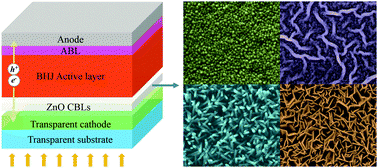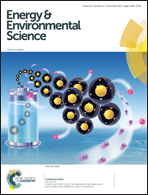ZnO cathode buffer layers for inverted polymer solar cells
Abstract
This article provides an overview of the design, fabrication and characterization of the most widely used cathode buffer layers (CBLs) constructed using pristine zinc oxide (ZnO), doped-ZnO, and ZnO-based composites as well as the surface modified ZnO-based CBLs for the improvement of power conversion efficiency (PCE) and long-term device stability of inverted polymer solar cells (PSCs). To achieve high PCE in inverted PSCs, the selection of an appropriate material to form high quality CBLs so as to optimize the electron collection and transport is particularly important. ZnO has been the most extensively studied material for CBL of inverted PSCs in view of its relatively high electron mobility, optical transparency, ease of being synthesized with low cost solution methods at low temperature, versatile morphologies, and being environmentally stable. It is pointed out in this review that the electronic processes at the interface between the ZnO CBL and polymer active layer play an important role in determining the solar cells performance. This review attempts to deliver better understanding with regard of the impacts of (1) morphology, (2) thickness, (3) nanostructures, (4) doping, (5) surface modification and (6) composition/hybrids of ZnO CBLs on the inverted PSCs performance. Well understanding the interfacial processes in PSCs is believed also a benefit to the emerging perovskite solar cells in view of their similar energy levels and device structures.


 Please wait while we load your content...
Please wait while we load your content...